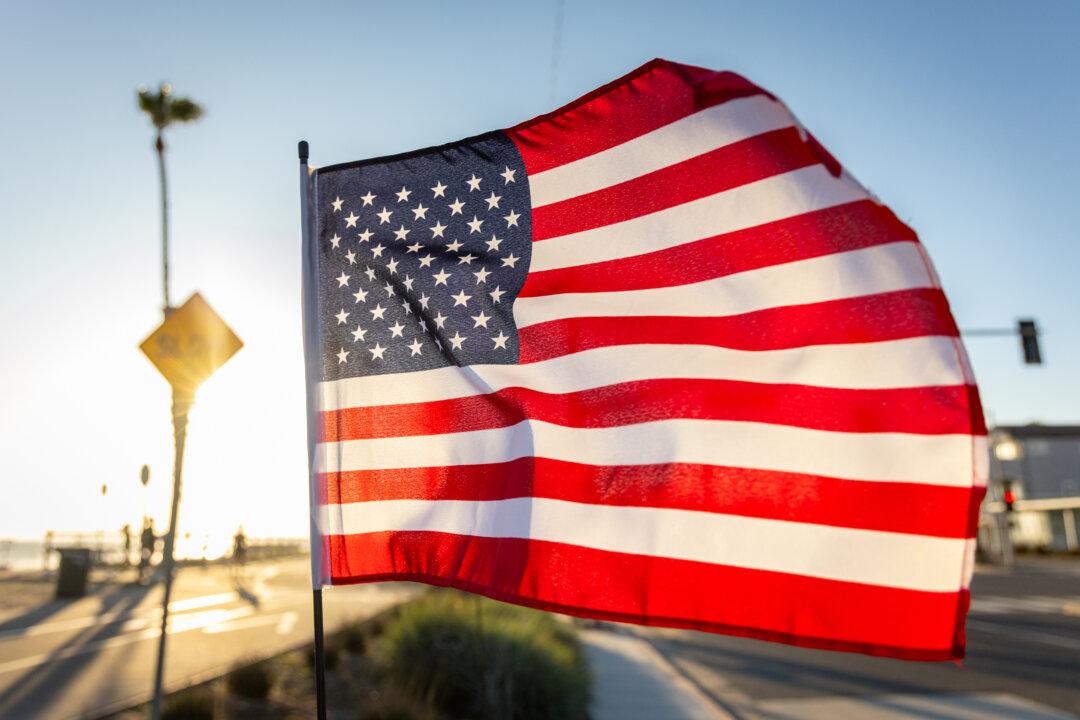The Republican National Committee (RNC) has announced its rules for who qualifies to be on stage for presidential primary debates.
The implications are fascinating and could yield some startling surprises. The rules also have some disturbing aspects.
Outsider candidate Vivek Ramaswamy—whom I just followed for several days for the first installment of a special behind-the-scenes series on presidential candidates (coming soon to an Epoch Times “theater” near you)—is, according to these rules, already qualified to appear.
Ramaswamy told me that he surpassed the required number of contributors in May. Ditto for the polls. Participating in the debates has been his goal from the start, as he believes that they'll change the race.
Conversely, and as strange as it may seem, former New Jersey Gov. Chris Christie and, of all people, former Vice President Mike Pence may have problems making the cut.
Christie and Pence—who have yet to declare, although they’re likely to do so soon (Pence filed the Federal Election Commission paperwork on June 5)—will qualify in the polling, but they may have serious trouble with the number of grassroots contributors.
They’re establishment politicians who are used to raising campaign money from a limited group of big donors, usually behind closed doors, and not from the public at large.
We can assume that they and their phalanx of strategists are already thinking of how to make up for this deficit. We shall see if they succeed.
Former President Donald Trump and Florida Gov. Ron DeSantis have, of course, already qualified and then some. I'll look at the implications of the rules for them in a moment but first some of the other potential candidates.
Also locked in for the debates are the two South Carolinians, former Gov. Nikki Haley and current Sen. Tim Scott (R-S.C.), both of whom easily qualify under both criteria.
But that’s where it ends for now. The others are in a more questionable position:
Among them, Epoch Times contributor and national talk show host Larry Elder is most likely to make it because he has a solid contributor list from his race against Gavin Newsom for the California governorship.
Former Arkansas Gov. Asa Hutchinson—whose speech at Sen. Joni Ernst’s (R-Iowa) “Roast & Ride” event I attended in Des Moines, Iowa, on June 3 drew the most tepid response of all the candidates—may have a problem generating enthusiasm outside his state.
It goes down from there.
Businessman Perry Johnson is miles from achieving either criterion, although he was great fun to interview and has excellent ideas about how to jump-start the economy.
North Dakota Gov. Doug Burgum is also said to be throwing his hat in the proverbial ring this week, but as Politico put it: “He’ll need 40,000 donors in fewer than 11 weeks—roughly equal to 5 percent of his state’s population.”
And that doesn’t even mention those out-of-state contributions.
Then, there’s Ryan Binkley, a Dallas-area businessman and pastor. Did you know he was running? Neither did I.
So back to Trump–DeSantis and, more importantly, how and why the RNC structured their 2024 rules.
The conventional wisdom has always been the more competitors, the more it favors Trump, since the 45th president has a significant—in fact unparalleled—number of loyalists who will vote for him under any circumstances, even if he declines to debate, which so far he has done.
He also has declined to sign a “loyalty pledge” guaranteeing that he would support the Republican candidate no matter who wins the nomination. (I’m not particularly fond of “loyalty pledges” either with their whiff of totalitarianism.)
The one-against-many strategy certainly worked for Trump in 2016, when as many as 17 candidates debated, sometimes split into two sessions based on their polling numbers.
With the new RNC rules, however, for 2024, as of now, only five (DeSantis, Ramaswamy, Haley, Scott, and, of course, Trump) qualify.
Christie and Pence stand in the wings as possibilities along with Elder. But if the number five holds or even goes to six or seven, who benefits?
Most of all DeSantis, who gets to go toe-to-toe with Trump (if he’s there), and Ramaswamy, arguably the most articulate, and possibly Elder (again if he’s there).
So why were the rules constructed this way? I have no private information about discussions at the RNC, but, like Fox News, they seem to be tilting toward DeSantis.
In the end, however, this likely will make no difference. Much was made of the Florida governor’s unique, Elon Musk-sponsored, debut on Twitter Spaces, only to find that it didn’t move the polls at all.
As of now, Trump’s lead seems to be Teflon, as he wins virtually every poll, sometimes by as much as 40 points—and has for as long as they’ve been taken in this race.
It also isn’t difficult to predict that the more he’s harassed by various biased government “legal” agencies, the higher his numbers will go. If the special counsel recommends an indictment while the Department of Justice continues to stonewall an investigation of the Biden family’s business dealings that smack of treason, Trump’s lead could jump from 40 to 80, resulting in a virtual nomination by acclamation.
Nevertheless, it’s notable that these new rules require the candidates to provide the RNC with their lists of financial backers, an action particularly unfair to the 45th president and possibly targeted against him.
The good news in the RNC decision, however, is that there may be some substance in the debates with fewer participants. At least they'll have more opportunities to speak and express their views.
That certainly won’t be true of the Democrats, who are highly unlikely to have any debates at all.
Democratic Party presidential aspirant Robert F. Kennedy Jr., not surprisingly and with a degree of understatement, has called that decision “unfortunate.”







